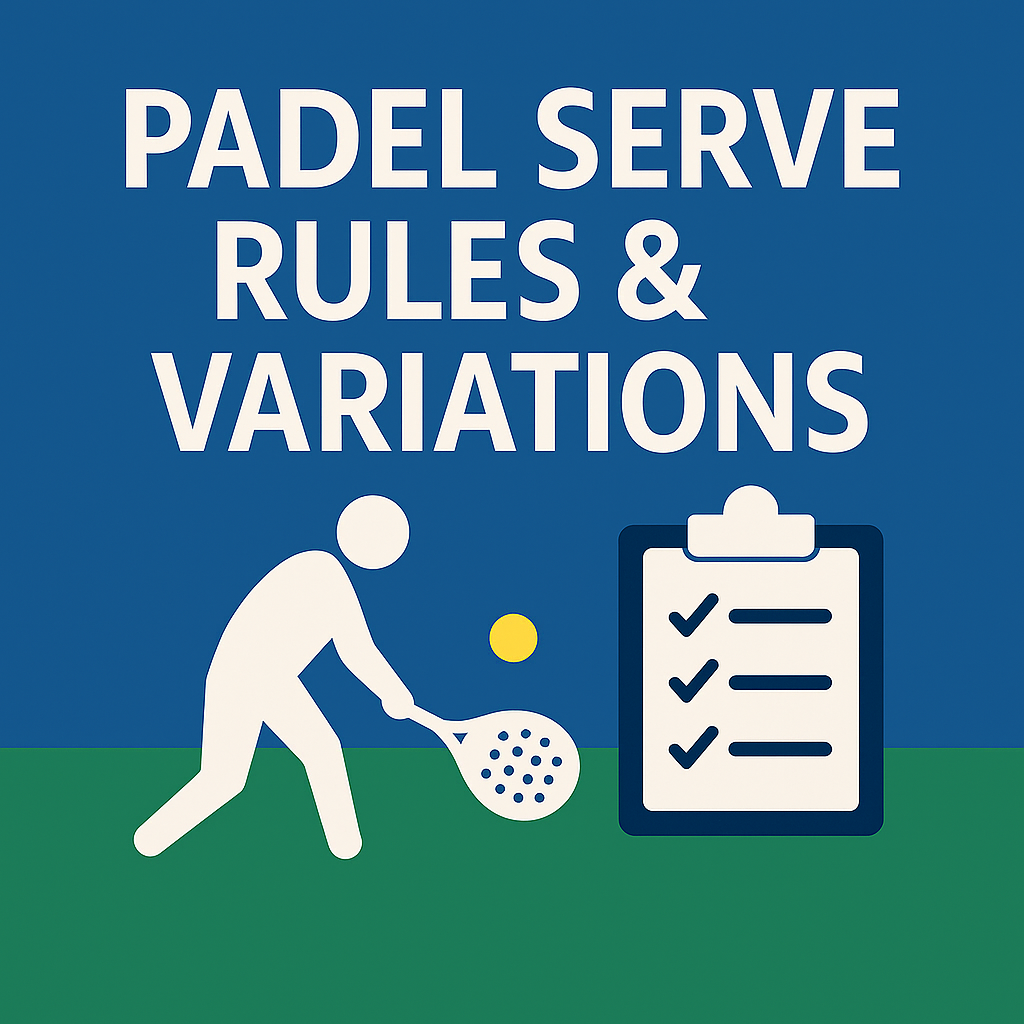
The serve in padel is unique: it’s underarm, low-impact, and highly tactical. Unlike tennis, the serve does not dominate the point — instead, it sets up positioning, momentum, and the fight for net control.
This guide breaks down every serve rule, the correct technique, common variations, faults to avoid, and how the serve shapes match strategy.
🟦 The Basic Padel Serve Rules
Padel serve rules are designed to make the game fast, fair, and accessible.
1. Underarm Serve Only
- The ball must be struck below waist height.
- You cannot hit a tennis-style overarm serve.
2. The Ball Must Bounce Before You Hit It
- Server drops the ball.
- Ball must bounce behind the service line.
- After the bounce, you hit it into the diagonal service box.
3. Serve Must Be Diagonal
From the right side → serve to the opponent’s right service box (your left).
From the left side → serve to the opponent’s left service box (your right).
4. Server Has Two Attempts
Just like tennis:
- 1st serve → if fault, you get a 2nd serve.
- 2nd fault → point lost.
5. Serve Must Land in the Opponent’s Service Box
A legal serve must:
- Bounce in the correct service box
- Can then hit the glass
- Must not touch the mesh directly after the bounce
Hitting the mesh immediately = fault.
🟩 The Serve Position
Servers must stand:
- Behind the service line
- Between the central line and side wall
At impact:
- At least one foot must be on the ground
- No stepping on or over the service line before contact
🟨 What Happens After a Legal Serve?
After bouncing in the service box:
- Ball may hit the back glass or side glass → still legal
- If ball hits mesh after the bounce → fault
Receiving team must hit the ball after the bounce, unless it’s a volley return (advanced tactic).
🟧 Serve Variations in Padel
Unlike tennis, padel serve variations focus more on spin, placement, and height.
1. Slice Serve
- Most common serve
- Curves away from receiver
- Forces weak, off-balance returns
2. Flat Serve
- Faster and more direct
- Used to surprise receivers
3. Kick/Topspin Serve
- Rare but effective when mastered
- Bounce jumps into side glass awkwardly
4. Body Serve
- Targets receiver’s chest or hip
- Reduces swing freedom
5. Wide Serve
- Pulls receiver off the court
- Creates space for server to rush the net
6. Slow Spin Serve
- Messes with rhythm
- Forces an awkward, low return
These variations allow servers to dictate the first shot of the rally.
🟫 Tactical Serve Placement
Great servers don’t serve harder — they serve smarter.
Best directions:
- Toward the side wall → creates difficult rebounds
- Into the receiver’s weaker side
- Into the body to jam them
- Short and slow to disrupt timing
The goal: force a weak return so the serving team can take the net.
🟥 Common Serve Mistakes
Beginners often struggle with:
- Contacting the ball above waist height
- Serving too close to the mesh
- Hitting serves too hard and losing control
- Serving predictable patterns
- Stepping over the service line early
Consistency matters more than power.
🟦 How Serve Strategy Influences Match Play
The serve determines the first 3 seconds of the rally.
Strong serves create:
- Easier net access
- Weak defensive returns
- Offensive opportunities
Weak serves cause:
- Opponents attacking immediately
- Pressure on the server’s partner
- Loss of net control
Net dominance starts with the serve.
🟩 Serve Strategy Indoors vs Outdoors
Indoors:
- Faster serves
- More flat or slice serves
- Placement to the side wall is key
Outdoors:
- Wind affects bounce height
- More slow, controlled serves
- Risky to go too close to mesh
Conditions change everything.
🟨 How Serve Quality Affects Betting
Bettors should analyse:
- Consistency of first serve
- Mesh errors on serve
- How often serve leads to net control
- Whether opponents attack second serves
Serve quality influences:
- Totals
- Handicaps
- Live betting swings
Pairs with weak serves often lose Golden Points.
🟧 Summary
The padel serve is a low-impact but highly tactical shot:
- Underarm, diagonal, and must bounce before hitting
- Can use slice, flat, topspin, body, or wide variations
- Designed to set up net control, not win outright
Mastering serve rules and variations is essential for consistent padel performance.
Next: Page 9 — Padel Return Strategy for Beginners.